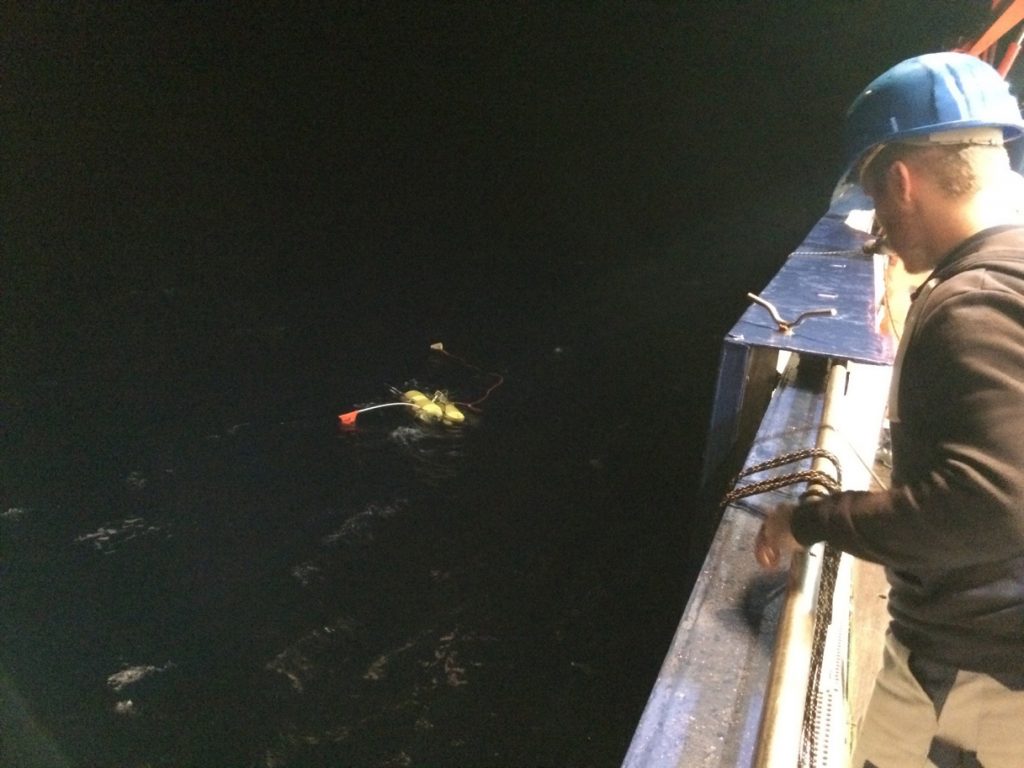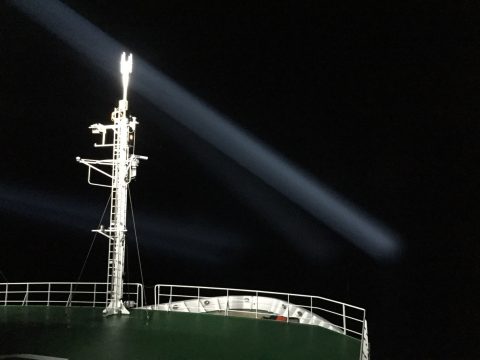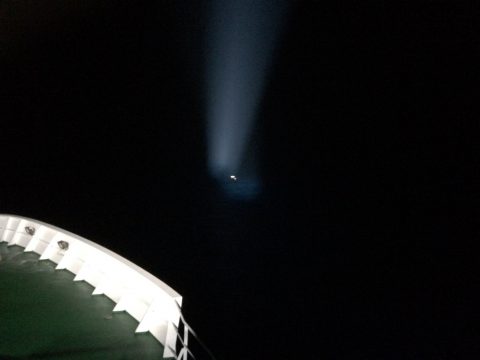Doing science at sea has its very own rules – just like the German soccer cup or DFB-Pokal, for which the saying goes: The cup makes its own rules. The teams dedicate many months to a thorough preparation, all options are evaluated, everything is double-checked, every tactical variation is considered and at the end everything turns out completely different than anticipated….
As described in our last entry, the setup of our ocean bottom seismometers or OBS includes a strong flash light, a radio beacon and – to be on the safe side – a bright orange flag. All these components are attached in order to locate the unit once it reaches the sea surface during recovery, in daylight hours as well as at night. Obviously, a good team is needed as well (just like for the DFB-Pokal), it goes without saying…
We have all of this on board, are optimally prepared. So it comes as a great surprise that things don’t turn out the way we had planned (just like in a DFB-Pokal match J ). In our case it was the flash lights and radio beacons that failed us. Both components contain a conductivity sensor and are activated once they reach the surface (and not while they reside on the seafloor, because here flash and radio signal are of no use, so battery life would be wasted). Once the unit hits the sea surface and turns into an upright position, the flash and beacon will protrude from the water. However, if the unit comes up in a horizontal position, which was the case for our instruments, all good plans fail and both flash and beacon are still in the water – just like the flag, because when it rains, it pours.
So we need to visually locate our gear and hawk’s eyes are what is needed here. Well, we have those on board: our joker is called Anke D., she is also our libero, i.e. plays all positions on the field. And we all know from the DFB-Pokal, that a joker together with a top team will be the match winner.
With this team we could locate our instruments when they appeared on the surface. During daylight hours this is difficult enough, so many eyes are needed, the younger the better…good for us that so many young students sail with us. During the night, fishing in muddy waters is extremely challenging. Nights at sea are pitch-black and there was no moon to help us out. So we were grateful that the Merian is equipped with strong ice flood lights on the starboard and portside of the vessel. We thus searched the sea surface until we found our gear – and it was Anke who proved to be a true match winner here. During the first night, we also could rely on the ice radar of Merian, because the sea was very still.
And just like in the German soccer cup matches, at the end it is the quantum of luck that decides the match. In our case it was the very calm sea that was crucial to our success at night.
Heidrun Kopp
Chief Scientist MSM71
(For a German version of this blog please visit www.planeterde.de)


